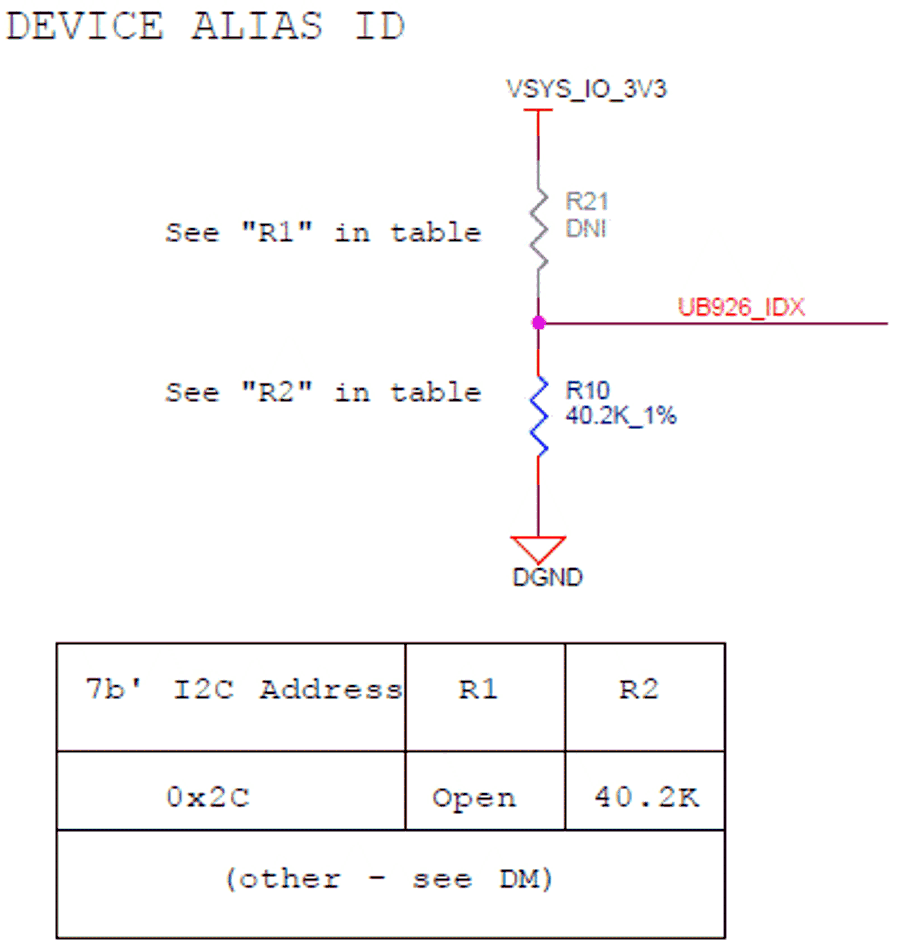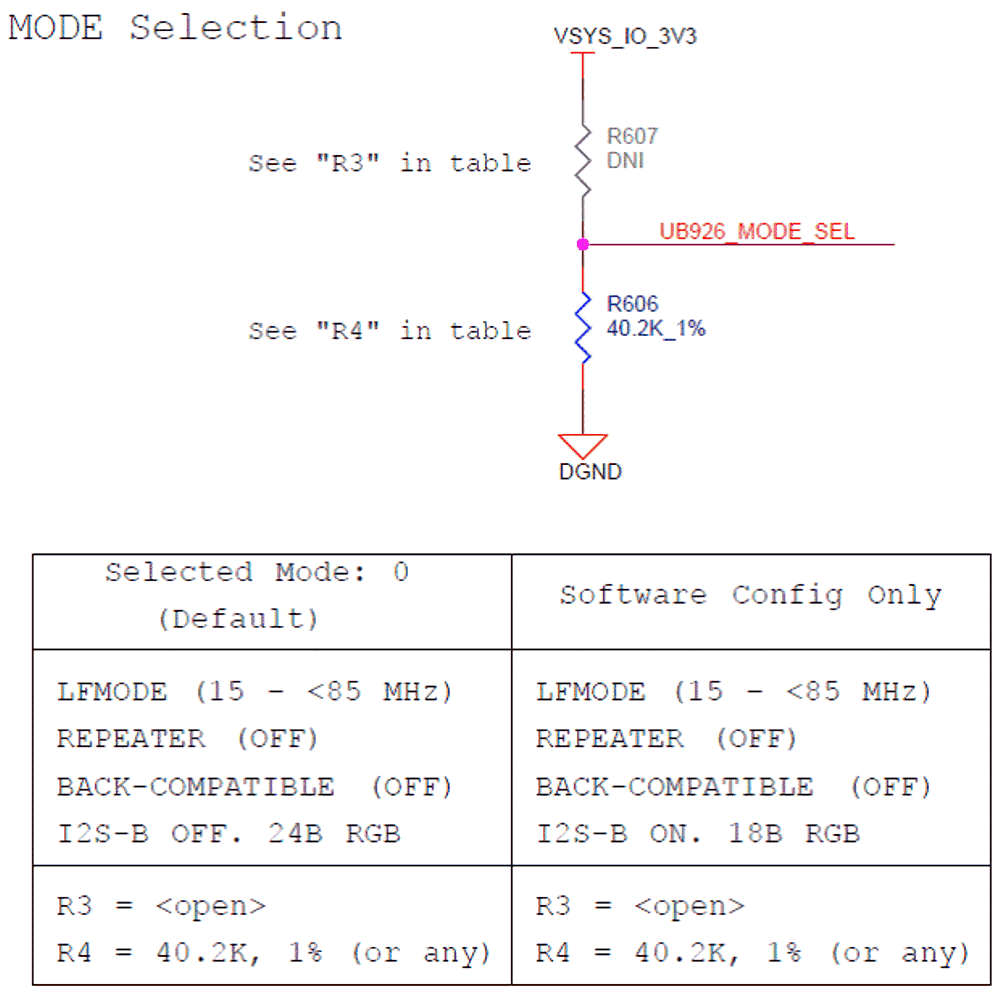SPRUIW7A October 2020 – February 2022
- Trademarks
- 1Introduction
- 2J7200 EVM Overview
- 3EVM User Setup/Configuration
-
4J7200 EVM Hardware Architecture
- 4.1 J7200 EVM Hardware Top Level Diagram
- 4.2 J7200 EVM Interface Mapping
- 4.3 I2C Address Mapping
- 4.4 GPIO Mapping
- 4.5 Power Supply
- 4.6 Reset
- 4.7 Clock
- 4.8 Memory Interfaces
- 4.9 MCU Ethernet Interface
- 4.10 QSGMII Ethernet Interface
- 4.11 PCIe Interface
- 4.12 USB Interface
- 4.13 Audio Interface
- 4.14 CAN Interface
- 4.15 FPD Interface (Audio Deserializer)
- 4.16 I3C Interface
- 4.17 ADC Interface
- 4.18 RTC Interface
- 4.19 Apple Authentication Header
- 4.20 JTAG Emulation
- 4.21 EVM Expansion Connectors
- 4.22 ENET Expansion Connector
- 5Functional Safety
- 6Revision History
4.15 FPD Interface (Audio Deserializer)
CP Board supports TI ‘s FPD Link III De-serializer IC Mfr. Part# DS90UB926QSQE for recover the audio signals from Tuner interface using HSD connector Mfr. Part# D4S20G-400A5-C. The de-serializer will recover up to eight digital audio channels plus I2C channel across digital link.
This audio signal is connected to McASP1 port of J7200 SoC through 1:3 DEMUX (SN74CBT16214CDGGR). The channel selection is supported by both GPIO expander and EVM configuration DIP switch (SW3).
The I2C1 signals of J7200 being used for controlling of the De-serializer. A 40.2KΩ pull down is provided on ID[X] pin to set the 7‘b I2C address to 0x2C.
 Figure 4-33 FPD-Link UB926 ID Setting
Circuit
Figure 4-33 FPD-Link UB926 ID Setting
CircuitPower +12V is provided to the HSD connector using a power switch TPS1H100AQPWPRQ1 to power the FPD Link-III Tuner expansion board. The power switch is controlled by a GPIO expander signal (UB926_PWR_SW_CNTRL).
The mode selection for the de-serializer is shown in Figure 4-34.
 Figure 4-34 FPD-Link UB926 Mode Selection
Circuit
Figure 4-34 FPD-Link UB926 Mode Selection
CircuitThe pin out for HSD connector J1 is given in Table 4-21.
| Pin No. | Signal |
|---|---|
| 1 | GND |
| 2 | RIN_N |
| 3 | POWER (12V) |
| 4 | RIN_P |